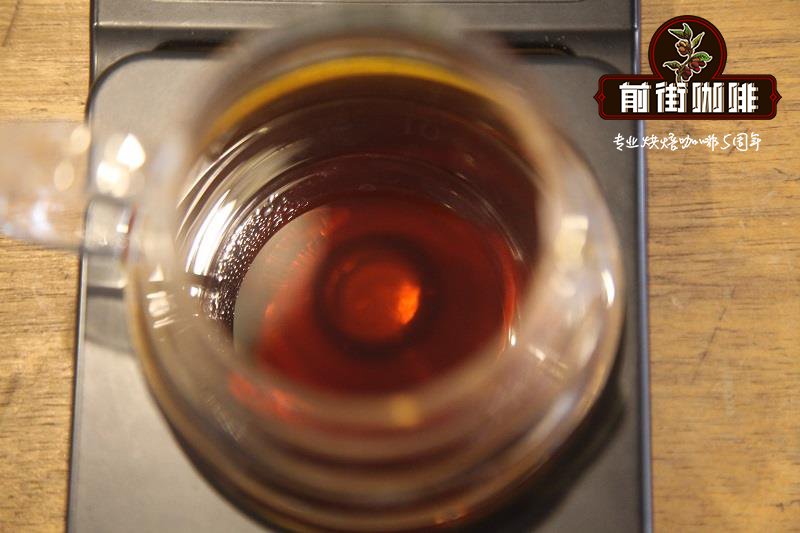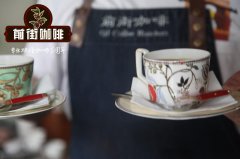What are the main producing areas of South American coffee beans? what are the flavor characteristics of Brazilian coffee beans?

Professional coffee knowledge exchange more coffee bean information please follow the coffee workshop (Wechat official account cafe_style)
Qianjie-brief introduction of Coffee producing area in South America
Brazil, as the world's largest coffee producer, ranks first in the world in terms of total output, accounting for about 30% of global production, accounting for about 35% of the world's total output, mainly in the central and southern provinces. Brazil's terrain is relatively flat, coffee trees are planted in a wide area, and most coffee plantations are below 1200 meters above sea level, with no shade from large trees. But high yield does not mean high quality. Brazilian coffee is mostly of mediocre quality, mainly growing Kaddura, Kaduai and bourbon varieties.
Colombia is the world's second-largest exporter of coffee, accounting for about 15 per cent of global production. Most of its coffee trees are grown in three mountains stretching north and south, and only Arabica species are planted.
Compared with Brazil, Colombian coffee is much better in quality, rich and unique in flavor, sweet in acidity and moderate bitterness, which is very suitable for drinking alone or mixing (in blended coffee, it is mainly used to increase the sweetness of coffee. Blend the bitterness of other coffees). The top Colombian beans are well-balanced in all respects, strong but not strong, fragrant but not prickly, sour but not astringent. It often has a caramel-like taste, similar to the aroma of pudding, and a mild fruit smell, just like milk pancakes.
Peru is not only one of the major coffee producers in South America, but also Peru's largest export agricultural product, which has grown significantly in recent years, reaching an all-time high in 2006. More than 90% of Peruvian coffee is grown in the north, in valleys east of the capital Lima, and in forest areas on the slopes of the Andes. Peruvian coffee has the characteristics of round taste, moderate mellowness, soft acidity, and slightly drupe flavor.
The production of coffee beans in Venezuela is not high, mainly to supply domestic demand. Although Venezuelan coffee beans are mainly produced in the west near Colombia, the flavor is not as sour as Colombia beans, but sweet and deep.
Ecuador, which crosses the equator, is one of the few countries in South America that produces both Arabica and robusta coffee. Ecuadorian coffee is not included in the list of boutique coffee for some special reasons (old-fashioned traditional harvesting and handling), and it is relatively rare in the market. Ecuadorian Galapago coffee is balanced and neutral in flavor, moderately mellow, with a little obvious but pleasant acidity, and has a special aroma.
Guatemala is located at about 15 degrees south latitude, bordering the Pacific Ocean on the left and the Caribbean Sea on the right. The Sheila Mountains on this side of the Pacific Ocean are the main coffee-growing areas of Guatemala. The wide and long distribution of mountains has led to great regional climate change in Guatemala, which has created seven major coffee producing areas in the country. The coffee in these seven major producing areas has different flavors and characteristics, among which Antigua coffee is particularly excellent, which has a slightly sour, rich glycol, slightly volcanic carbon burning flavor.
Like other Central American countries, Arabica coffee is widely grown in Costa Rica. Because it is planted at high altitude, the coffee here also has a strong sour taste, and the coffee tree grows slowly because of the lower temperature in the mountain area, and the coffee flavor is more complex and not monotonous. And the coffee produced in Tarasu has a fruity flavor and a special flavor of chocolate or stone fruit.
The coffee producing areas of Nicaragua are mainly located in the central and northern parts of the country, and raw beans are mainly treated by washing. Malaggippe (a giant species of coffee beans called elephant beans) is highly regarded. This coffee has a well-balanced taste, without the distinct acidity that other Central American coffees often have, but it has a clear taste and excellent aroma.
Panamanian coffee is medium and uniform in flavor and texture, with a blue mountain-like temperament, so Panamanian coffee is often imitated as the high-priced Hawaiian Kona or the Jamaican Blue Mountains. Good Panamanian coffee beans are amazing with a clean, clear, bright and gentle taste and medium mellow.
El Salvador's territory, mostly upland terrain, is the smallest country in Central America, bordering Guatemala and Honduras on both sides. The coffee tree in El Salvador is Arabica, which is mainly divided into bourbon and parka. Its coffee is refreshing and uniform, which is divided into three grades according to altitude, namely SHG (Strictly High Grown), SG (High Grown) and SC (Central Standard).
Knowledge expansion: Brazil, as the world's largest coffee producer, ranks first in the world in total output, accounting for about 30% of global output, accounting for about 35% of the world's total output, mainly in the central and southern provinces.
In short: Qianjie is a coffee research hall, happy to share the knowledge about coffee with you, we share unreservedly just to make more friends fall in love with coffee, and there will be three low-discount coffee activities every month. The reason is that Qianjie wants to make more friends drink the best coffee at the lowest price, which has been Qianjie's tenet for 6 years!
END
Important Notice :
前街咖啡 FrontStreet Coffee has moved to new addredd:
FrontStreet Coffee Address: 315,Donghua East Road,GuangZhou
Tel:020 38364473
- Prev

Duncan Coffee Manor hand Coffee Taste Duncan Manor Coffee taste Duncan Manor Rose Summer introduction
Professional coffee knowledge exchange more coffee bean information please follow the coffee workshop (Wechat official account cafe_style) Duncan Estate / Las Brujas Reserve Gesha Natural BLUE LABEL Marmalade, Rose Hip, Fresh Blueberry wine round, rich in natural craft gesha. Aromas of jam and raspberries, fresh blueberries
- Next

What's the taste of washed Kenyan hand brewed coffee? does Kenyan hand brew taste good with berry flavor?
Professional coffee knowledge exchange more coffee bean information please follow the coffee workshop (Wechat official account cafe_style) Thunguri AA KENYA Black Raspberry, Persimmon, Sage this lively coffee has aromas of milk chocolate, fresh apricot and black raspberry. The brewing cup has aromas of persimmon and grapefruit, with acidity of red grapes and pleasant creamy taste.
Related
- Beginners will see the "Coffee pull flower" guide!
- What is the difference between ice blog purified milk and ordinary milk coffee?
- Why is the Philippines the largest producer of crops in Liberia?
- For coffee extraction, should the fine powder be retained?
- How does extracted espresso fill pressed powder? How much strength does it take to press the powder?
- How to make jasmine cold extract coffee? Is the jasmine + latte good?
- Will this little toy really make the coffee taste better? How does Lily Drip affect coffee extraction?
- Will the action of slapping the filter cup also affect coffee extraction?
- What's the difference between powder-to-water ratio and powder-to-liquid ratio?
- What is the Ethiopian local species? What does it have to do with Heirloom native species?

